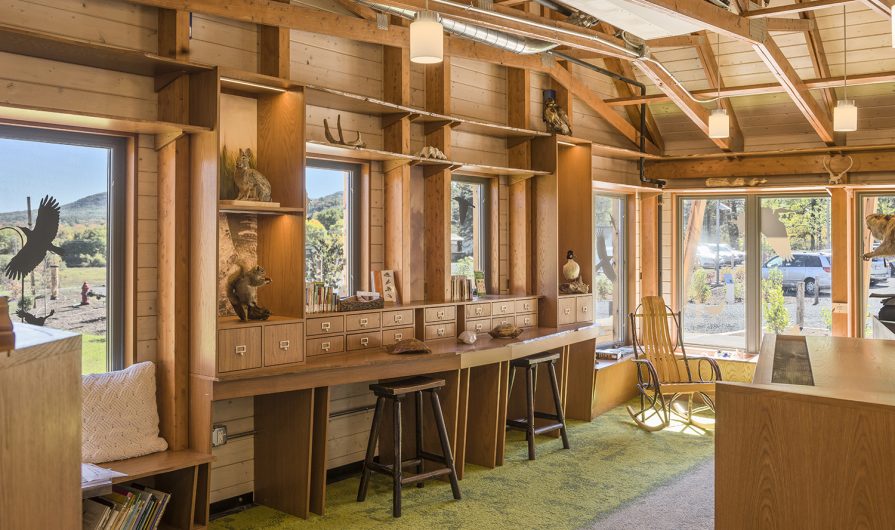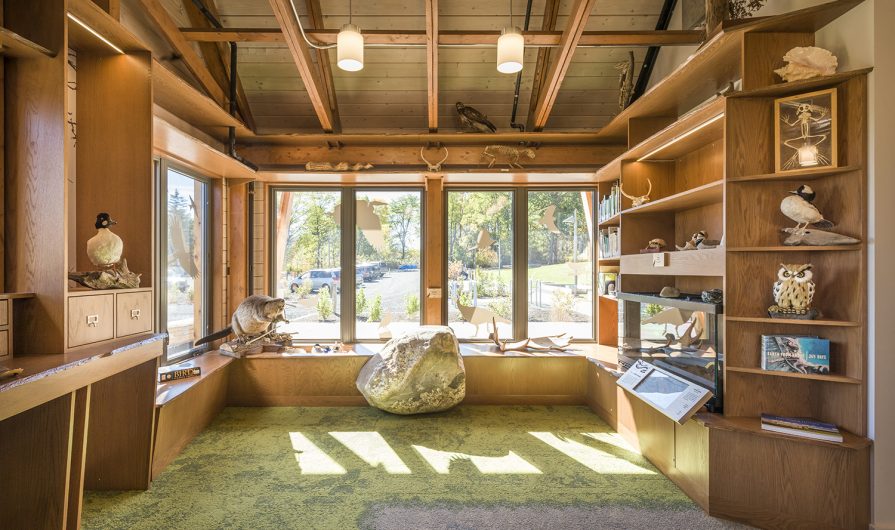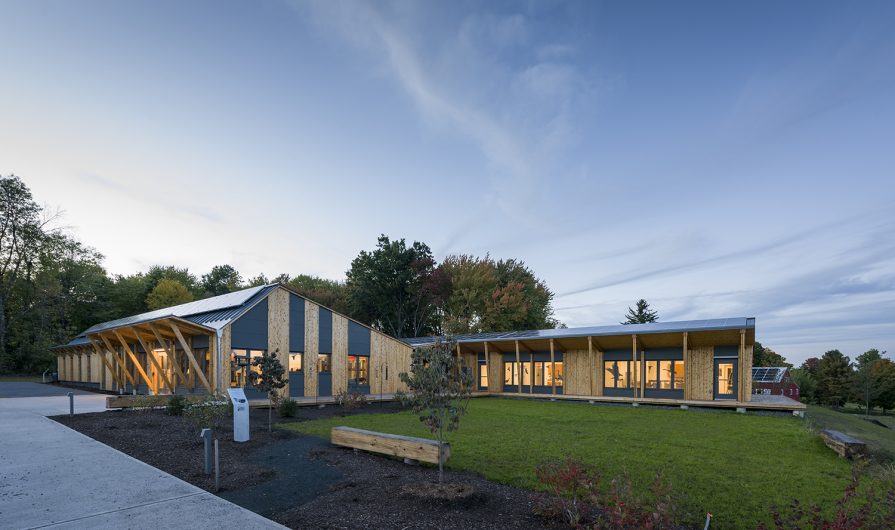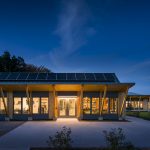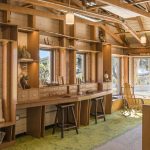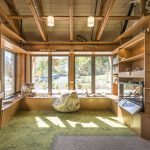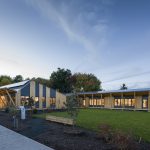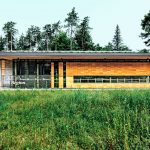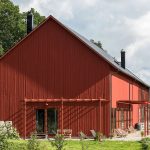A building that practices what it preaches – while wood delivers the message
The Hitchcock Center for the Environment aims to teach environmental literacy to all ages, while seeking sustainable solutions through the study of natural systems. To that end, this Certified Living Building not only helps students recognize the importance of science and engineering in meeting many of the environmental challenges we face today, but also that the natural world itself holds abundant wisdom and solutions.
Given such an ambitious mission, it’s no surprise the 9,000-sq.ft. center – complete with classrooms and a resource center with live exhibits and interactive learning tools – practices what it preaches. Among its many sustainable attributes, the net-zero building harvests and recycles its water, uses composting toilets and is made of responsibly sourced, non-toxic materials. Recycling and compost throughout the building was designed to make collection as seamless as possible for staff and visitors.
As part of the holistic effort to reduce its carbon footprint, the center also utilized an innovative all-wood structural system, with a frame and shell system built from locally sourced Eastern white cedar. The timber frame is clad on all sides (both walls and roof) with continuous tongue-and-groove decking that acts as diaphragm, lateral system and interior finish. This shell is covered in an air and vapor barrier to ensure that it’s watertight. The all-wood envelope and structure is based on the idea that solid wood can be used as a building material for both its carbon sequestration properties and for its thermal effusivity (its capacity to radiate thermal energy). In this way, along with creating a strong visual character and structural capacity, the wood provides both literal and figurative “warmth” to the space.
Further to the center’s commitment to sustainable living, the design team used a combination of certified, locally sourced and reclaimed materials to create a responsibly sourced building. The bulk of the wood was FSC certified and included engaging two millwork contractors to renew their FSC Chain of Custody. Black locust bollards, from this Massachusetts invasive species, were harvested only 25 mi. away by a family-owned facility using FSC principles. Other site-salvaged materials include oak benches from cleared wooded areas and a “basking boulder” installed inside to illustrate warming techniques of cold-blooded animals. Nearly all materials were sourced within a 300-mi. radius. The all-wood building structure is primarily bolted and screwed together to facilitate end-of-life disassembly and reuse.
While one part of the construction team focused on restoring the site’s contaminated soil and reintroducing native vegetation to the roughly three acres of property, another focused on the building itself, which features numerous elements designed to promote human
interaction. Outside, a series of log benches, salvaged from site work during construction, serve as places to sit, talk and climb, while the courtyard decks further encourage exploration and conversation. Inside, a reading nook is lined with a low bookcase that doubles as a seating ledge, with a row of storage cubbies in the north hallway performing the same function. From every angle, the center was designed with human-scaled spaces in mind, with an eye to the benefits of spaces designed for children, where they can feel comfortable climbing, crawling and engaging with their surroundings.
The center is committed to serving as a public resource to promote environmental literacy. Much of its programming is offered at no or low cost, and a scholarship helps low-income families participate in its summer camp programs. There is no entry fee to tour the building, and the outdoor classrooms, demonstration gardens, courtyards and nature play areas – including a “mud kitchen” – are easily accessible.
The result of this synchronicity between structure and programming is a powerful learning destination that closes the gap between people’s aspirations for a sustainable future and the knowledge, skills and attitudes they need to achieve that future. Here, the important role of wood creates a foundation for discovery.
CLIENT
Hitchcock Center for the Environment
Amherst, MA
ARCHITECT
designLAB Architects
Boston, MA
STRUCTURAL ENGINEER
Structures Workshop
Providence, RI
GENERAL CONTRACTOR
Wright Builders
Northampton, MA
PHOTOGRAPHY
Peter Vanderwarker
Boston, MA


